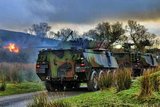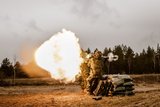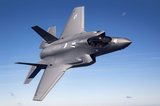On 4 October the UK armed forces commenced a five-week, two-part Exercise Trident Juncture conducted by NATO - the largest NATO exercise in more than a decade.
In all, 30 nations are participating in the exercise, including all the three branches of the armed forces of the UK, to test the NATO Response Force (NRF) and other allied forces.
The UK and other participating NATO allies have committed 140 aircraft, 230 military units and over 60 ships to the exercise, drawing in a total of around 36,000 international troops. Around 2,800 personnel from the UK, along with Typhoon fighter jets, helicopters and naval vessels, will participate.
Trident Juncture puts the NRF into crisis situations to test NATO’s flexibility, readiness, and ability to respond to threats from any direction. The exercise will also test functions of the Very High Readiness Joint Task Force – or Spearhead Force – ahead of it becoming fully operational in 2016.
Vice Admiral Ian Corder, the UK’s military representative to NATO and the EU, said: ‘Trident Juncture is the biggest and most ambitious NATO exercise in more than a decade, focussed on exercising crisis response, collective defence, and helping to shape the future adaptation and posture of the Alliance.
'It will demonstrate the Alliance’s capability, readiness, and ability to address whatever threats it may face, now and in the future. I am delighted the UK personnel will be playing such a major part in this key undertaking alongside our allies and partners. It will be a clear demonstration of the UK’s unwavering commitment to NATO solidarity and security.’























